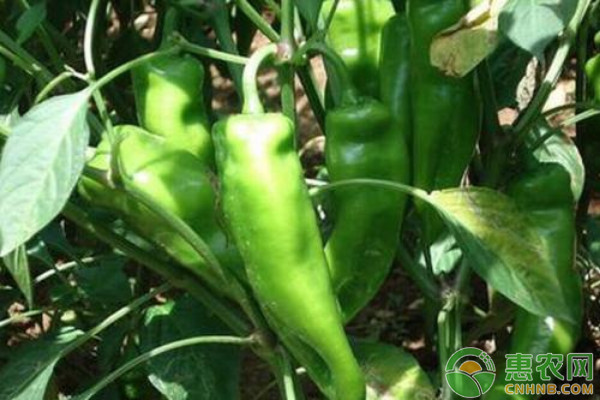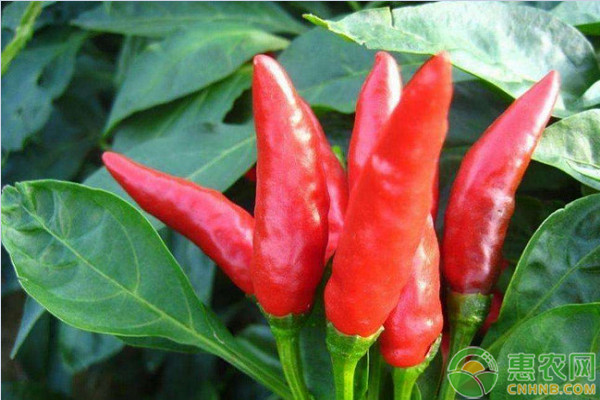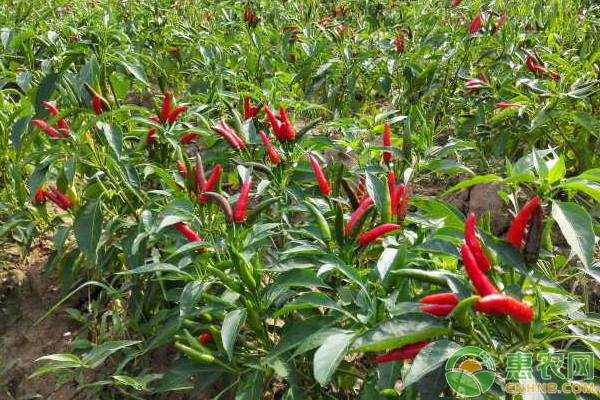How to cultivate high-yield red pepper? Pepper seeding method and field management
There are old vegetable farmers who say that they grow peppers. If you want to go deep sorghum and break the old bottom, you can have high yield. What do you think of the farmers? Today, let's talk about how to cultivate high-yield peppers to achieve high yields. New-born growers who need it can take a look. 1. Land preparation and base fertilizer Chilli should not be used for continuous cropping, nor can it be used in crops such as eggplant, tomato, potato and tobacco. The cultivated pepper plots should be well drained, convenient for irrigation and drainage, and require deep tillage. It is best to do winter ploughing and leisurely frozen soil to improve the soil and eliminate wintering pests and pathogen spores. Before planting, the topsoil will remain larger, so that it is breathable and refreshing, which has a good effect on preventing falling flowers, falling camps and fallen leaves. Changsha vegetable farmers' requirements for planting pepper fields are “deep ditch sorghum, broken old bottom, earth flat and large water flowâ€. The width is generally 1.3-1.7 meters (continuous ditch), planting 2-3 rows. There is also a width of 2.3-2.7 meters, which is planted laterally on the raft. At the same time, 50-80 tons of fermented manure per acre, 15 kg of superphosphate, 25 kg of grass ash as base fertilizer. Second, cultivation conditions The temperature requirement of pepper is between the eggplant and the eggplant. Seed germination temperature is 23-30 ° C, below 15 ° C can not germinate. Pepper seedlings require higher temperatures, lower temperatures, and slower growth. In the early days of flowering, the temperature is 20-25 °C during the daytime and 15-20 °C during the night. As a result, the soil temperature is too high, especially the strong light directly hits the ground, which is unfavorable to root growth and easily causes toxin disease and daily burnt disease. Third, sowing seedlings 1 seed bed selection: the seedbed should choose north to south, high dry water, and convenient water source, and has not planted the plot of the Solanaceae crop. 2 seedbed preparation: The seedbed is best to dig the soil in the sky, splashing a layer of human and animal waste, dried, and covered with a film to prevent loss of fertilizer when it rains. 3 sowing: the bed soil is fully wetted before planting, and it is flat and flat. The width of the seedbed is generally 1.5-1.7 meters. Generally do not soak seeds and germination. Early-maturing seeds are generally sown in January, late-maturing seeds are usually sown in February-March, and 75-120 grams of planting is required for planting one acre. After sowing, cover with a fine soil mixed with old ash or coal ash, the thickness is about 2 cm, to cover the seeds. Then watering, after receiving water, cover the mulch, and finally use a thin bamboo raft or bamboo to form a small arch frame, about 0.5 meters high, covered with film, the film north side with soil compaction, to protect against wind. The bricks are pressed on both sides so that the film can be uncovered at any time and the air is ventilated. 4 seedbed management: after sowing to pre-emergence, generally do not need management, found that began to emerge, should immediately remove the mulch, otherwise the formation of high seedlings. After the emergence of the seedlings, the film was uncovered at 9 am on a sunny day and the film was still covered at 4 pm. Try to ventilate as much as possible on a rainy day. It is found that the bed soil is white, and the seedlings are wilting, so watering is required, and the watering time must be at 9:00 am and 1-2 am. Two hours after watering, check again. If it is found to be still dry, it will be hydrated to make the seedlings grow consistently. Rainy days and frozen days should not be watered. Otherwise, the humidity will be too high and the bed temperature will decrease, which is prone to disease. In the snowy weather, the grass window can be covered, the grass window is covered with a film, and the electric light can be installed in the bed to protect the cold and protect the seedlings. 5 rows of seedlings: In order to make the seedlings thick and strong, the root system is developed. When the two seedlings of the seedlings appear, they need to be planted once, the plant spacing is 6-10cm, the row spacing is 12-15cm, and the rows are watered to prevent the seedlings from wilting and the seedling beds. Preparation, requirements and management are similar to the seed bed. Fourth, the colonization method The planting of pepper is suitable for soil temperature above 15 °C, and it is prematurely planted because of low soil temperature, slow growth, and falling flowers, which can not achieve the purpose of early maturity. Planting distance, early maturing varieties line spacing 40-50 cm, plant spacing 26-33 cm, l 2 per hole, late maturing varieties line spacing 66-73 cm, plant spacing 50-60 cm, 1 hole per hole. Choose a sunny afternoon planting, the morning seedbed needs to be watered to facilitate the seedlings. Five, cultivating and weeding After planting, it should be ploughed in time. The plants began to grow and focused on cultivating once. Before the plants are sealed, they will be ploughed again. Interplanting combines weeding and soil cultivation. 6. Fertilizer management After planting, it is necessary to grab the sunny day and apply the seedling fertilizer. Each dose should not be too much or too thick, otherwise it will cause a long delay and delay the flowering result. When the first and second layers are fruited, it is necessary to apply more fertilizer to promote fruit growth. After the fruit is harvested, the soil is required to have sufficient fertilizer to allow the plants to grow normally and produce results. If the soil is not dry before the watering, the leaves and dead plants will be quite common, especially during the period from the ups and downs to the autumn. Therefore, when irrigating, the irrigation time must be determined according to the weather forecast. The depth of irrigation should not exceed three-quarters of the ditch, and it should be carried out at night or in the early morning, and the emergency irrigation should be urgently discharged. Seven, harvesting and seeding As fresh food, most of them harvest green fruit, and they can also harvest red fruits. As a dried chili, it is necessary to harvest red ripe fruits, and harvest them in time, otherwise it will affect the growth and results of the plants. The method of selecting the harvested plants and selecting the fruit selection means that the standard strains are selected according to the characteristics of the varieties in the field, and the leaves are used as the remaining strains. The first layer of fruit will be harvested as soon as possible, leaving 2-4 layers of fruit as seed, and when the fruit is red ripe, the fruit with the characteristics of this variety will be further selected, and the harvested fruit will be placed in the shade. Cook for 5-7 days, cut open the seeds, dry and store. The above is all the key points of today's pepper cultivation. The farmers' friends come to give guidance. If you have other technical content you want to know, you can continue to pay attention to Hui Nong! Livestock Industry Nitrile Gloves Livestock Industry Nitrile Gloves,Blue Nitrile Exam Gloves,Powder Free Nitrile Medical Gloves,Latex Free Powder Free Nitrile Gloves Puyang Linshi Medical Supplies Co., Ltd. , https://www.linshimedicals.com

